With 87 summers behind you, putting on a giant exhibition of your life’s work at Paris’s prestigious Centre Pompidou might smack of the elegiac. But Baron Foster of Thames Bank, race-car collector, helicopter pilot, engineer of architectural derring-do, is in no mood to indulge the Grim Reaper. This, we are politely told as we enter, “is not a retrospective but rather a futurspective—an ongoing exploration for works that are inspired by the past, rooted in the present, but can adapt to the needs and desires of an optimistic future.”
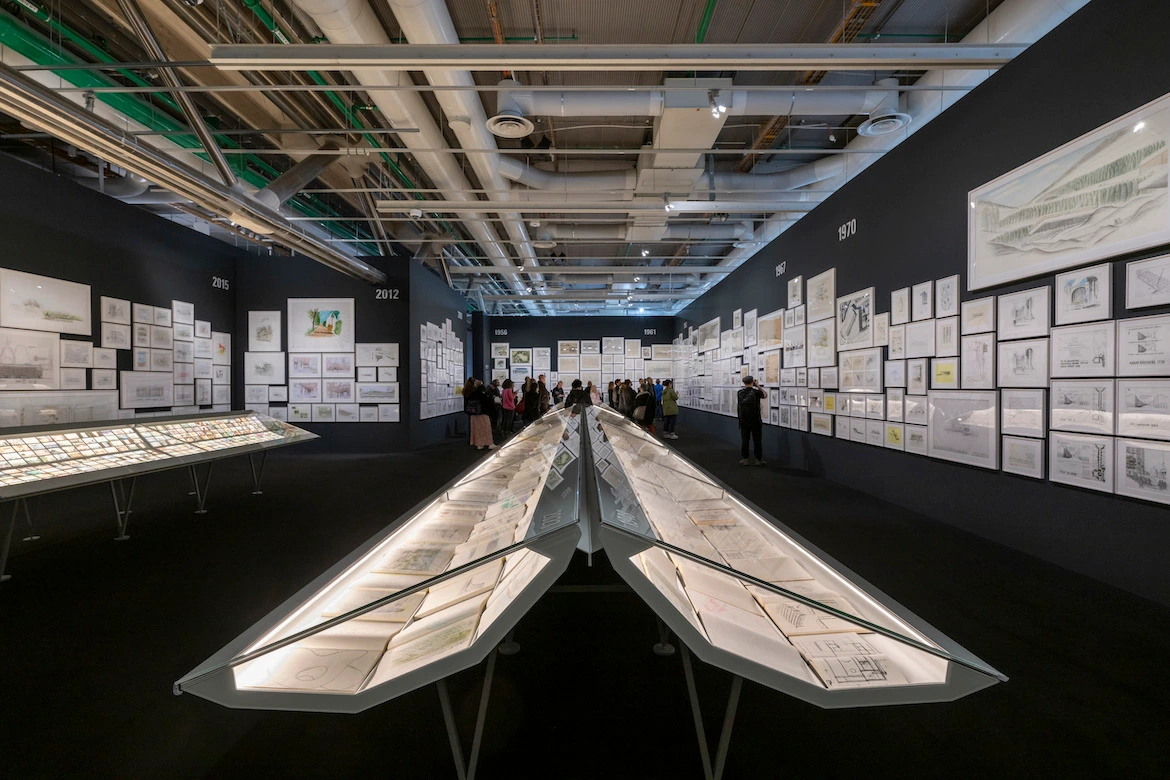
A trove of drawings and sketches span six decades of Foster's work. Photo © Nigel Young/Foster + Partners
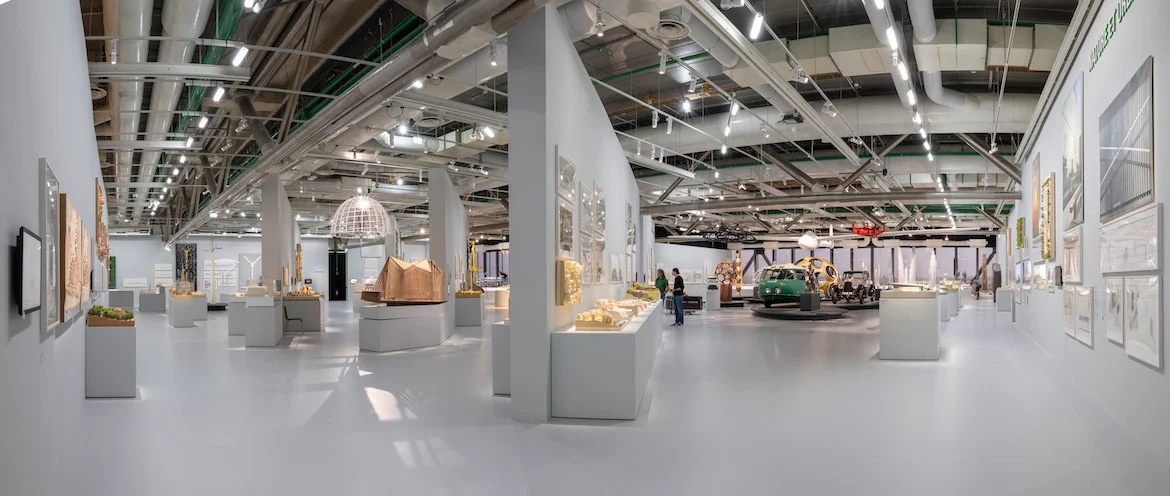
On view at the Pompidou's sixth-floor Galerie 1, the nearly 24,000 square foot exhibition is the museum's largest-ever show dedicated to a single living architect. Photo © Nigel Young/Foster + Partners
Showing at the Pompidou has become a rite of passage for any self-respecting starchitect—Tadao Ando, Frank Gehry, Oscar Niemeyer, Jean Nouvel, Dominique Perrault, Renzo Piano, Richard Rogers, Aldo Rossi, and Bernard Tschumi have all put on major retrospectives there. Mostly, these exercises in auto-hagiography are staged in the ground-floor Galerie Sud, but Foster is showing in the far larger Galerie 1 on level six, the first time in the institution’s history that a living architect has been given so much space. On the one hand, the ambitions and breadth of his six-decade career were (according to curator Frédéric Migayrou) hard to edit down, and on the other, if there’s one man who can make exciting the generally dull business of exhibiting architecture, it’s Lord Norm.
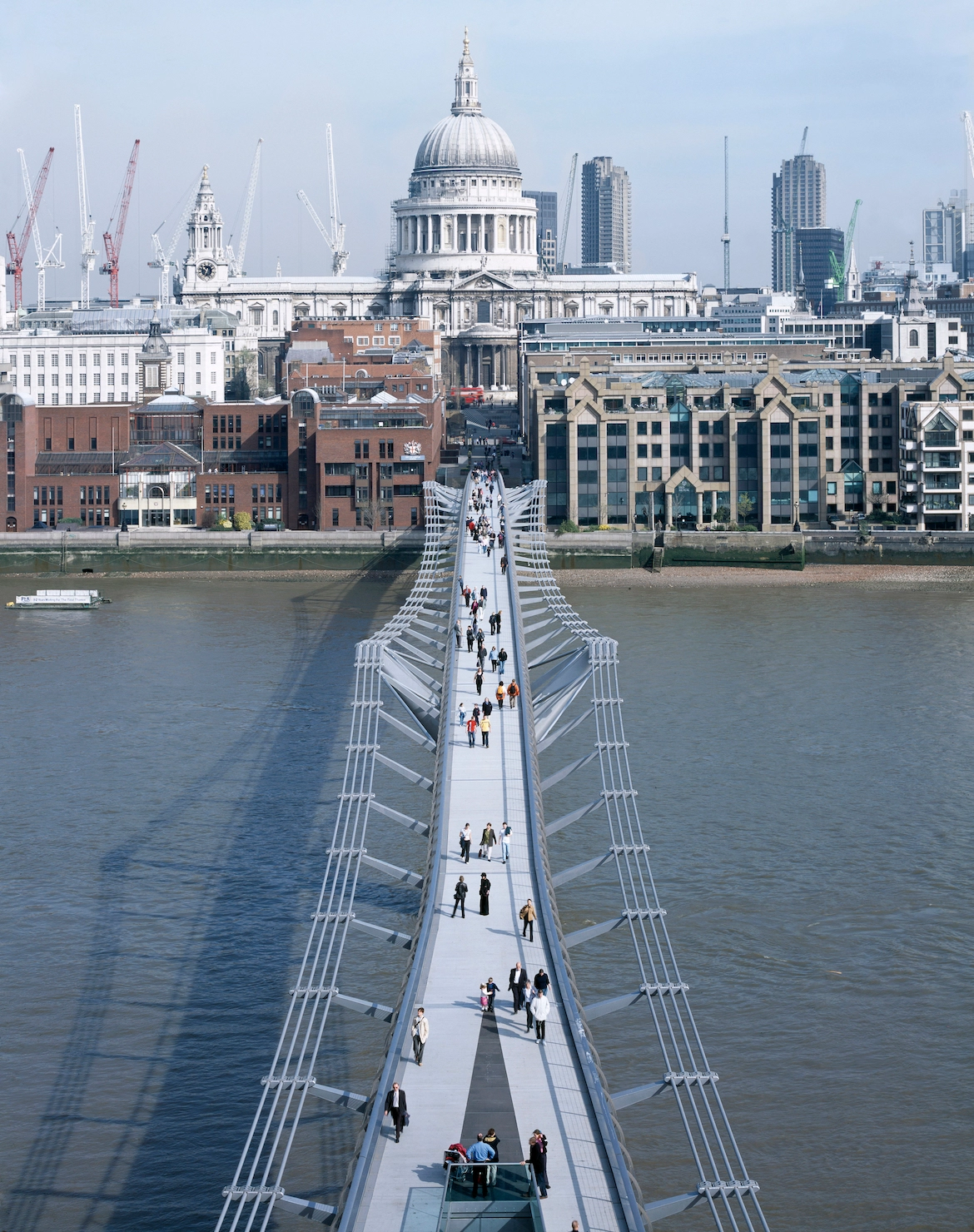
1
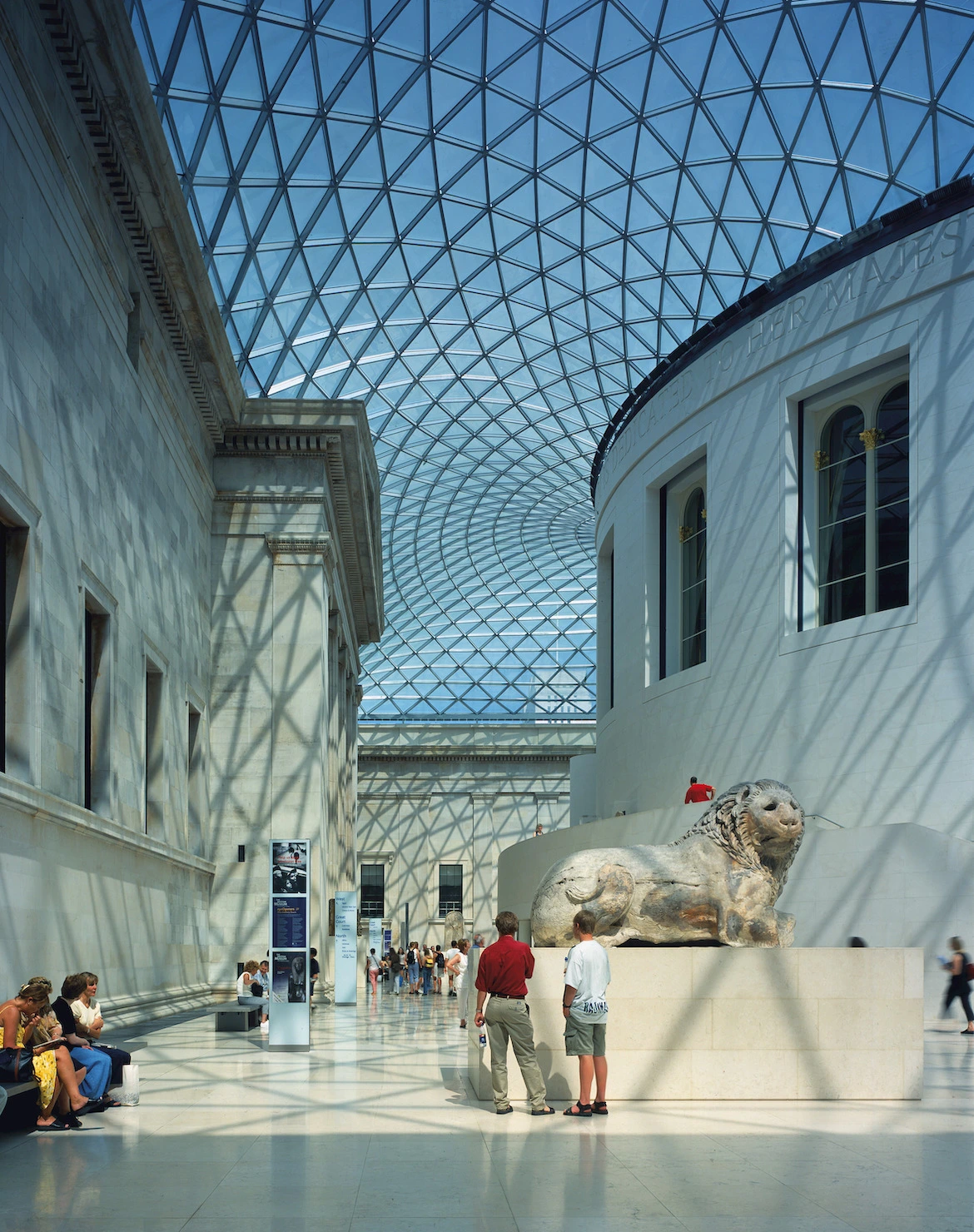
2
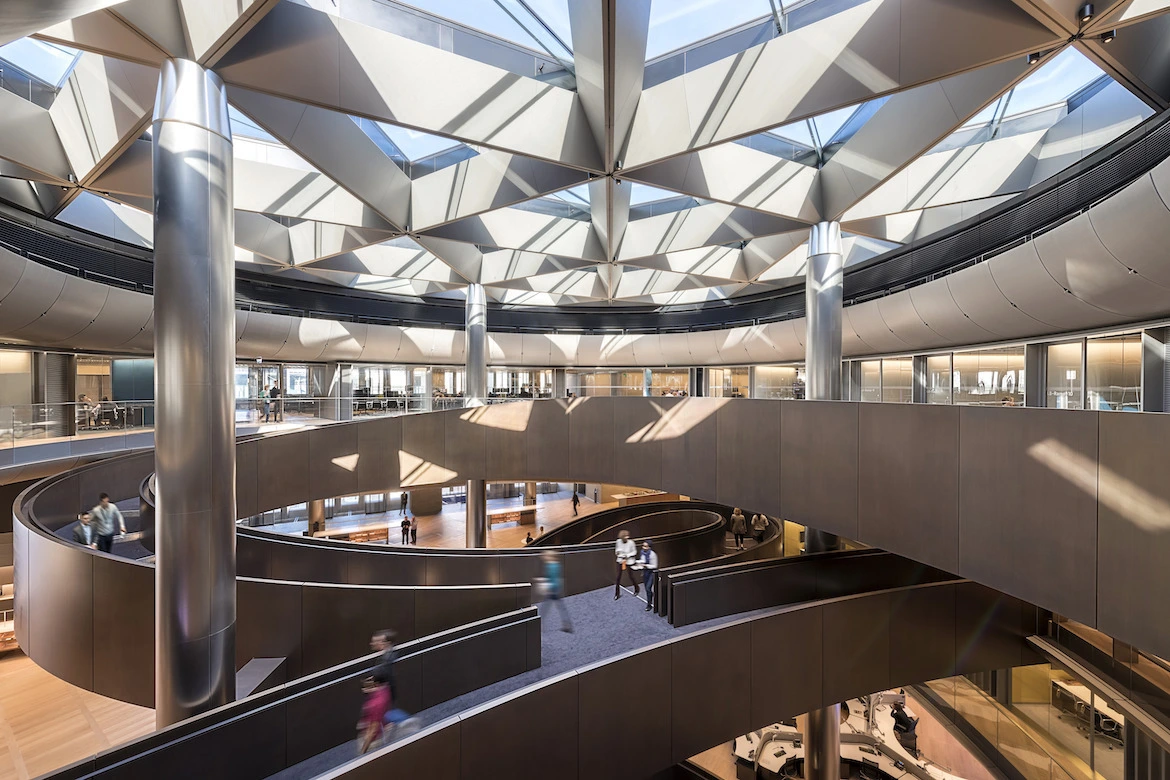
3
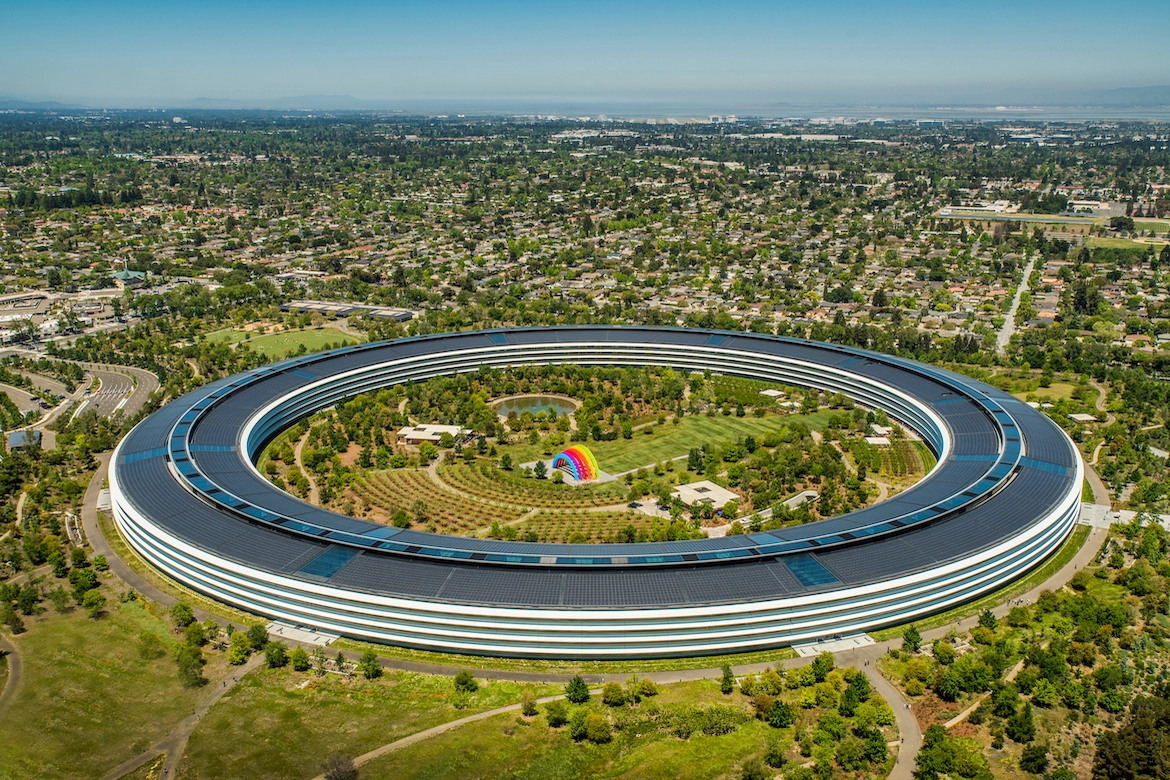
4
Millennium Bridge, London, 2000 (1); Great Court at the British Museum, London, 2000 (2); Bloomberg Headquarters, London, 2017 (3); Apple Park, Cupertino, California, 2018 (4). Photos © Nigel Young/Foster + Partners
Foster has spent his life convincing the super-busy—powerful politicians and billionaire businessmen—that they should build his firm’s designs, so it’s only natural that making architecture, fun, palatable, and easy to comprehend is among the things he does best. He has also built his reputation around a certain personality cult, which is turned up full volume here: the introductory wall texts to each section are all signed “N.M.,” while the vast room you first enter is filled floor to ceiling with drawings by the great man, as well as with specially designed presentation cases showing a generous selection of his personal photographs and notebooks—from his school homework in the early 1950s to the latest jottings.
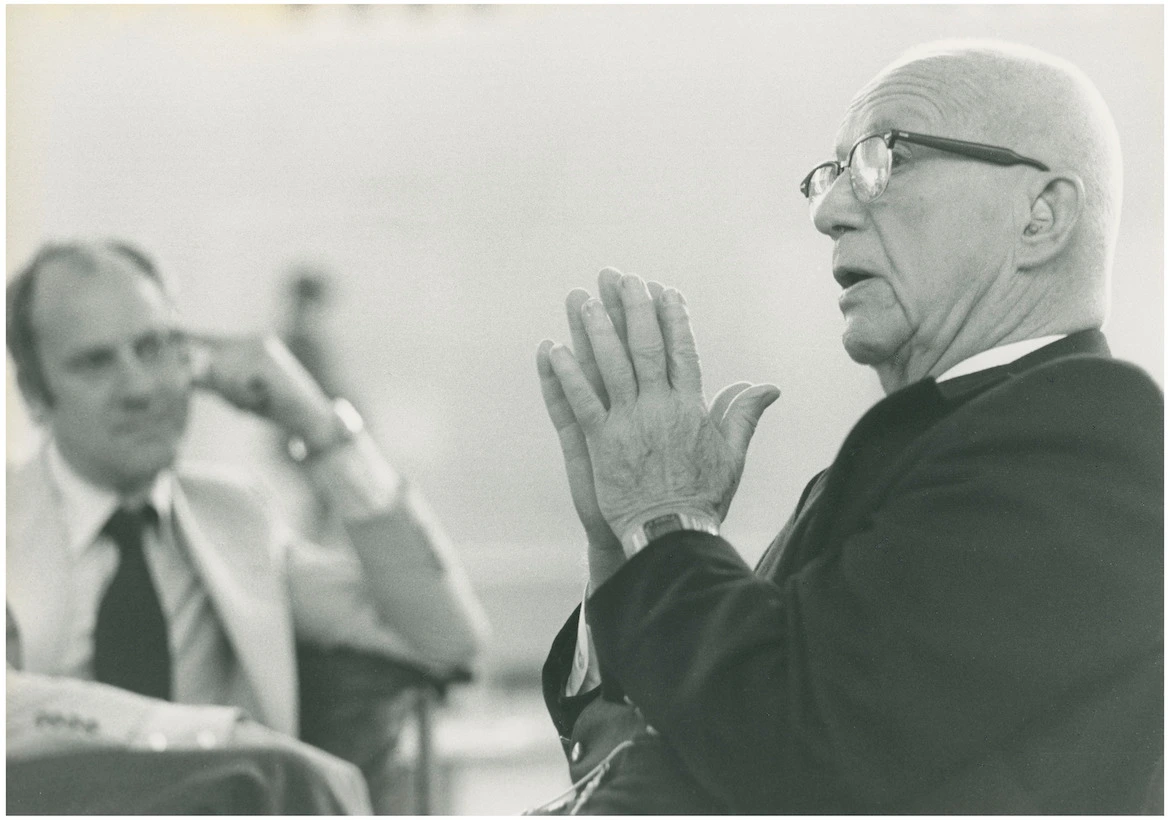
Norman Foster and Buckminster Fuller. Photo © Ken Kirkwood
The exhibition continues with a carefully curated vitrine of Foster’s youthful influences—Eagle comics, Whole Earth Catalog, Jane Jacobs, Norbert Weiner’s Cybernetics, Architecture Without Architects, Vers une Architecture, etc.—before wowing us with some big-boy toys, including a glider, a 2010 replica of Bucky Fuller’s 1934 Dymaxion car #4 (part of the Foster Family Collection and a reminder that they worked together), Fuller’s fiberglass Fly’s Eye Dome, and Le Corbusier’s personal 1925 Voisin C7 Lumineuse, intrepidly tracked down and lovingly restored to roadworthy condition by N.M. himself. To complete the message, artworks pepper the display here and there, among them Constantin Brancusi’s 1928 L’Oiseau dans l’espace, paired with a 1941 Hamilton propeller, and Umberto Boccioni’s 1913 Futurist bronze, Man in Movement.
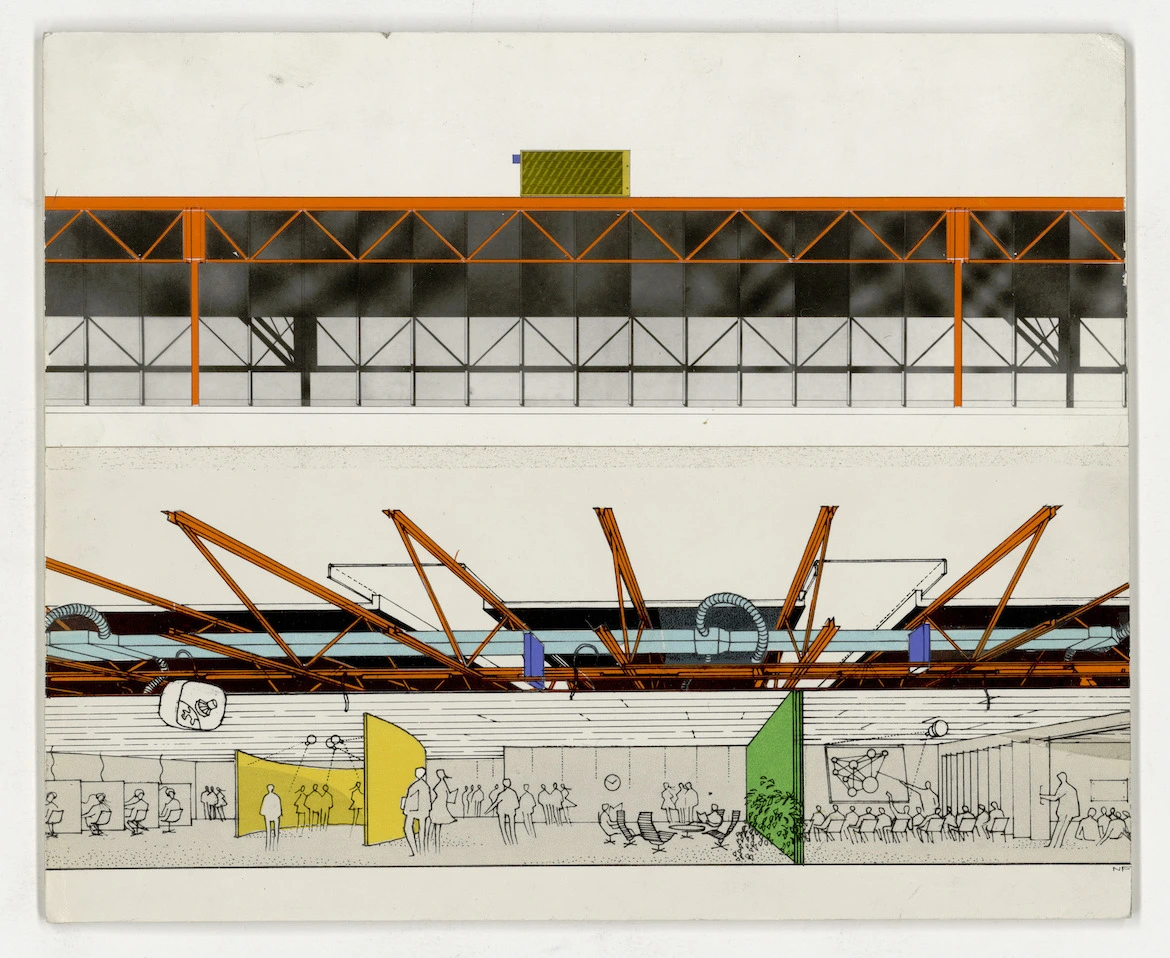
5
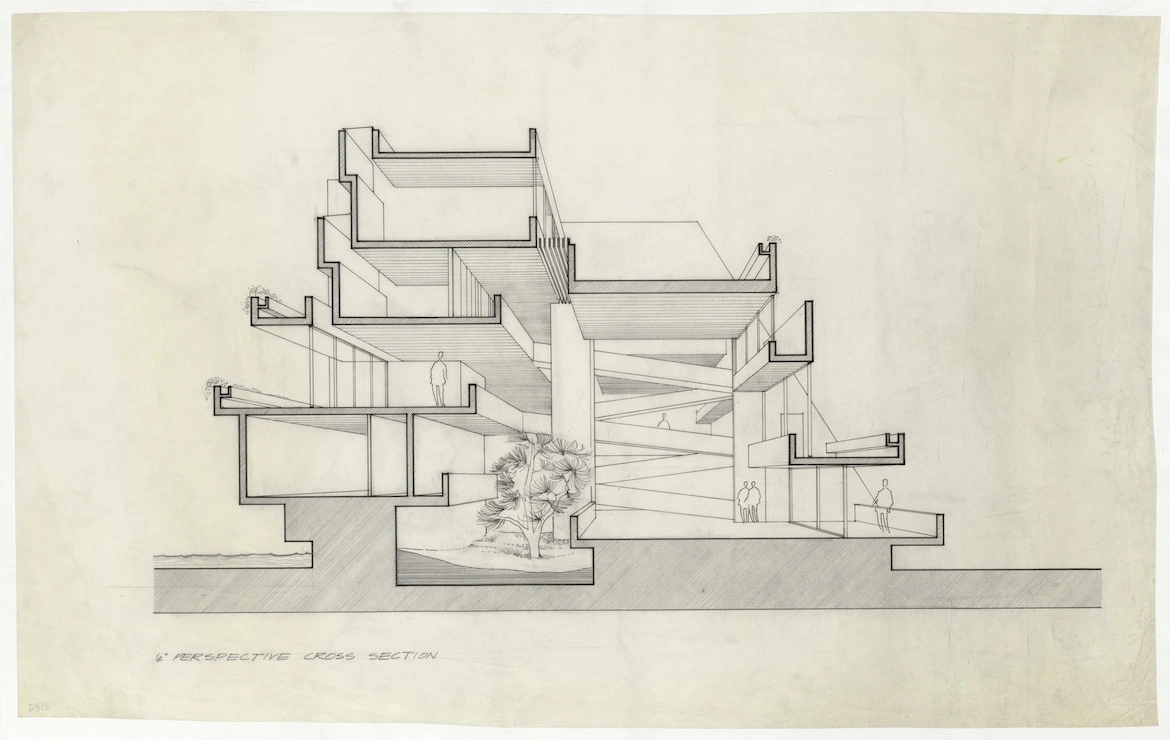
6
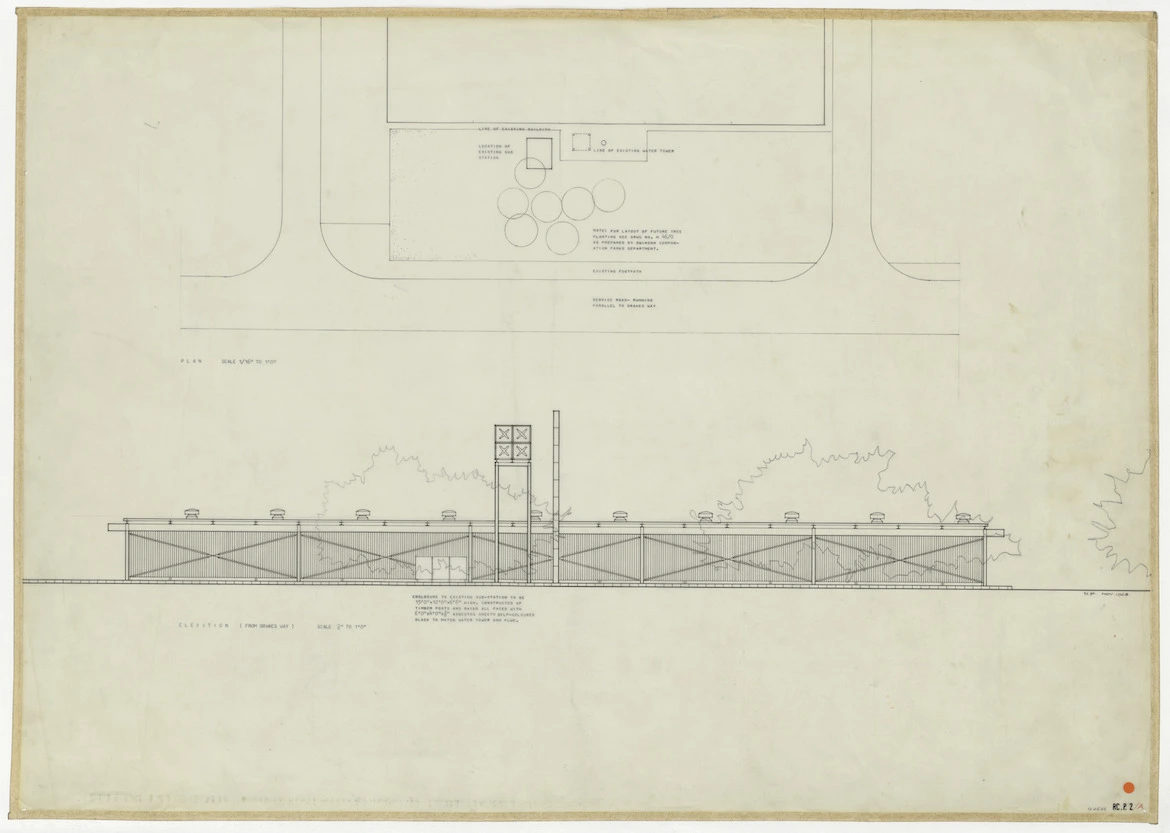
7
Comprehensive School, Newport, 1967 (5); Private House, 1962 (6); Factory of Reliance Controls, 1965 (7). Images © Norman Foster Foundation
This collection of objects in space is accompanied by wall displays showing some of Foster’s seminal early projects, among them the 1967 Reliance Controls factory in Swindon, realized when he was still a member of Team 4 with his future wife Wendy Cheesman and Richard and Su Rogers, or the 1970 Fred. Olsen passenger terminal in London, which marked their breakthrough after he and Cheesman founded Foster + Partners. We also find the 1975 study for Gomera in the Canary Islands, a green-tourism proposal included here as part of a concerted strategy throughout the exhibition to convince us that Foster—self-made multi-millionaire servant to Apple, HSBC, and Bloomberg, and architect of countless giant airports—was actually an eco-warrior all along. “The exhibition traces the parallel themes of sustainability and the anticipation of change for a better future—themes that I have pioneered with colleagues and collaborators since the 1960s,” he writes in his introductory wall text.
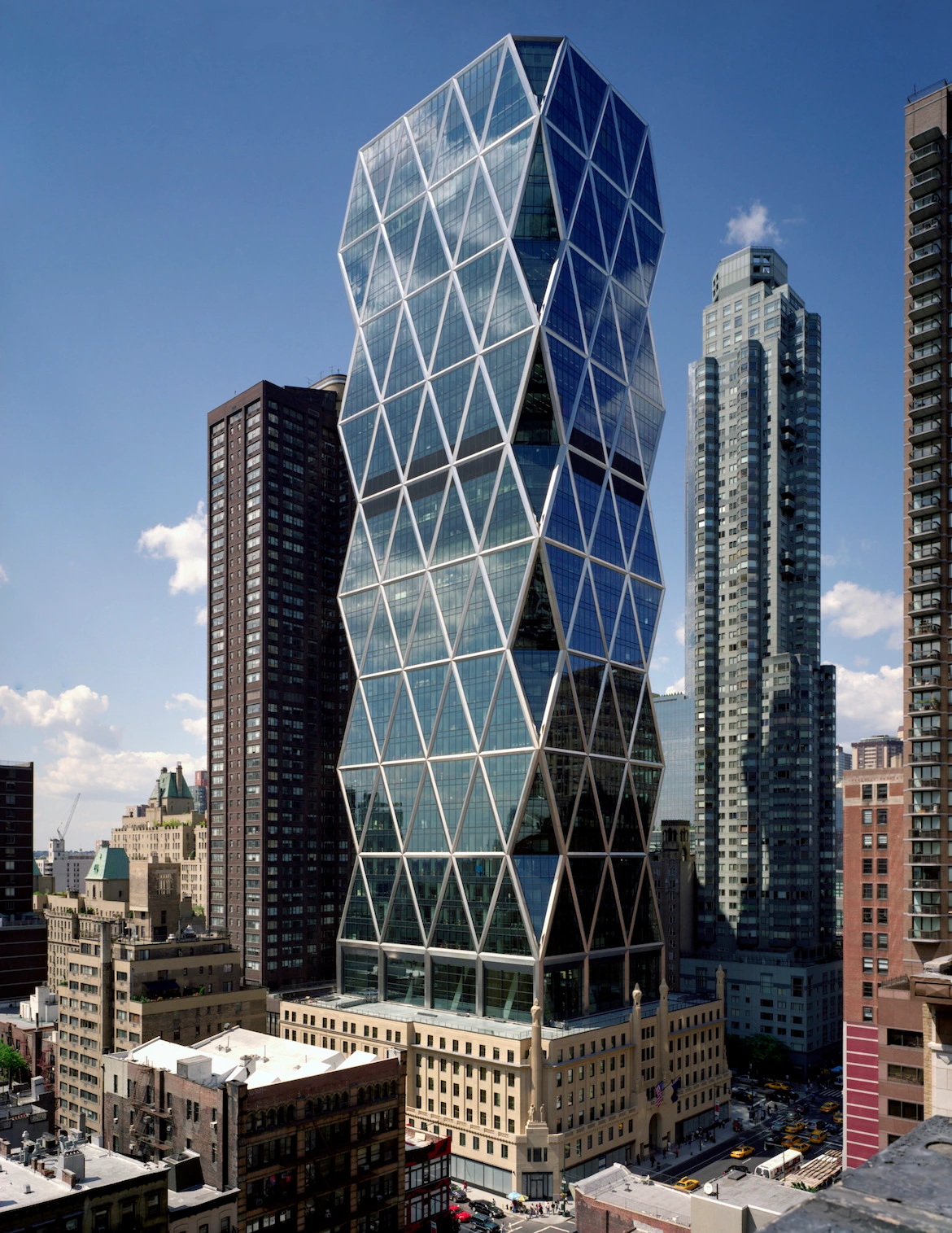
8
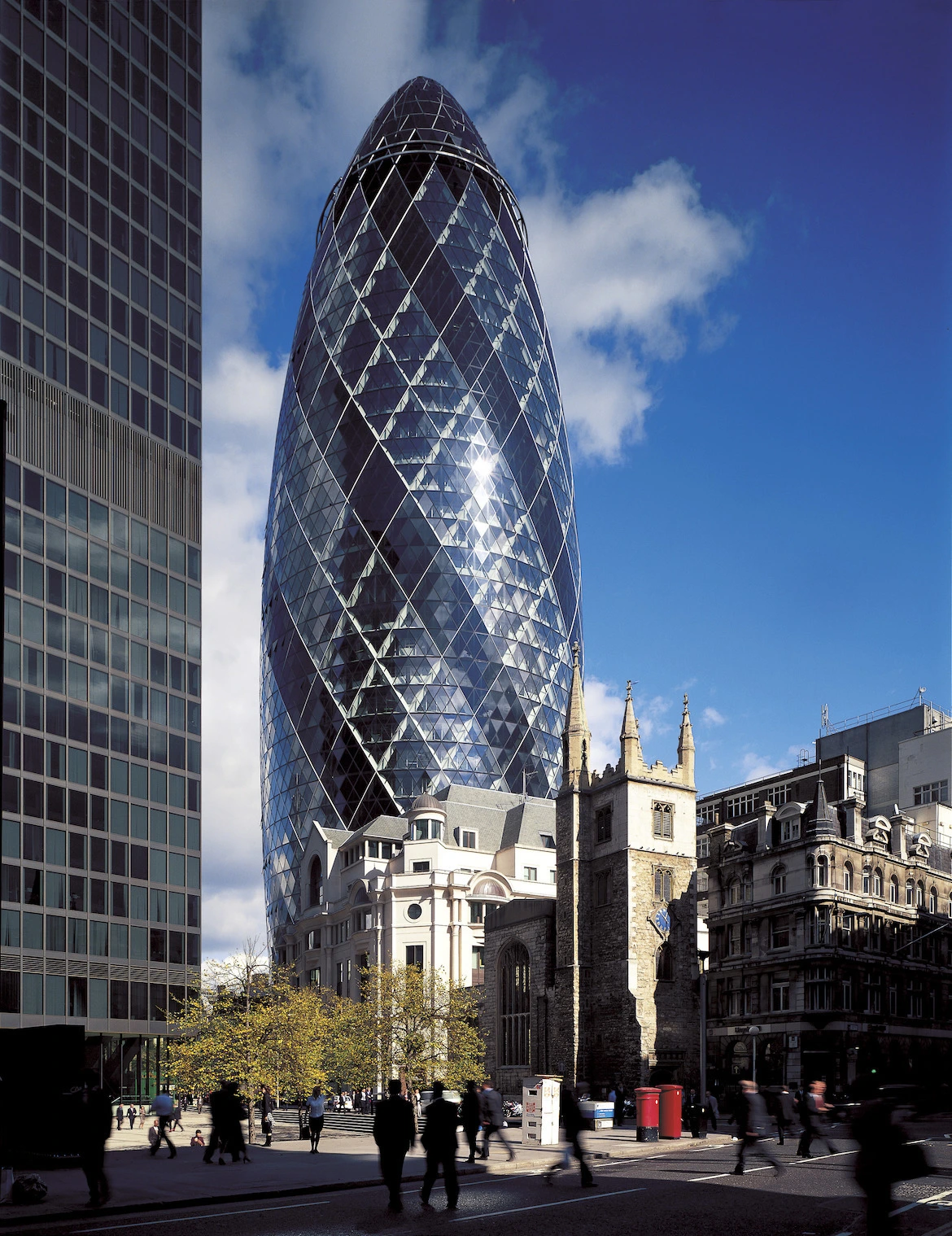
9
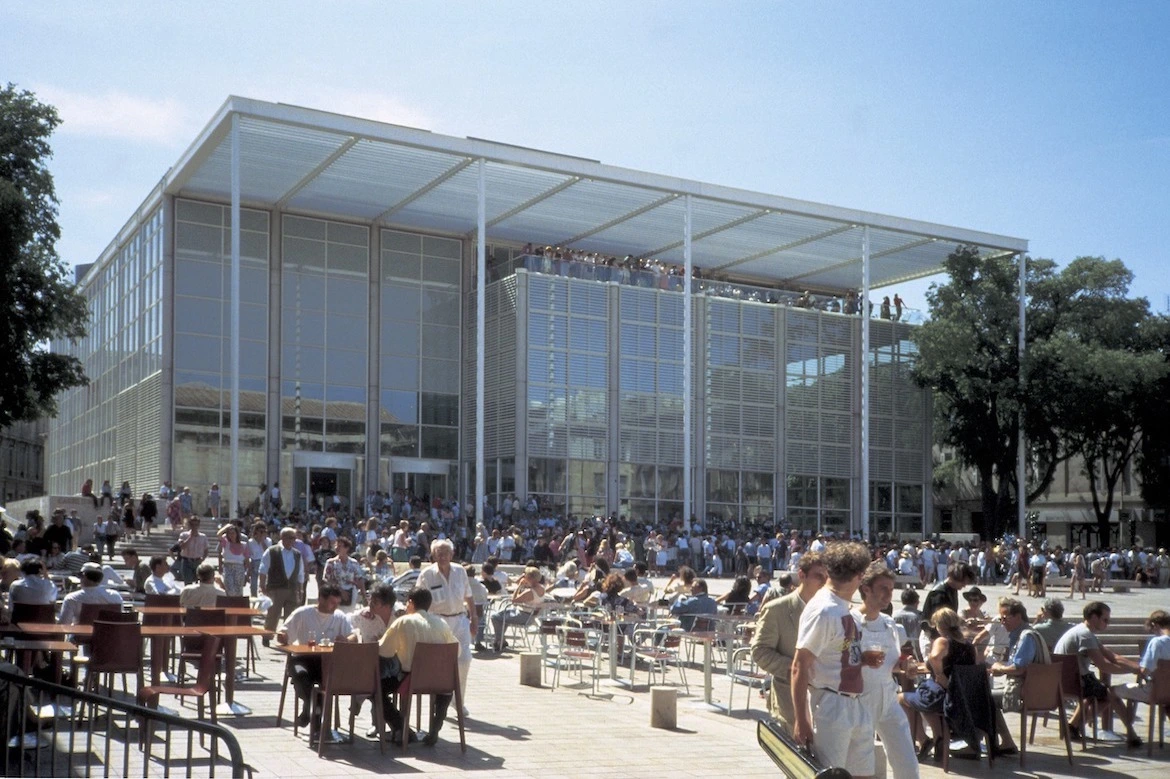
10
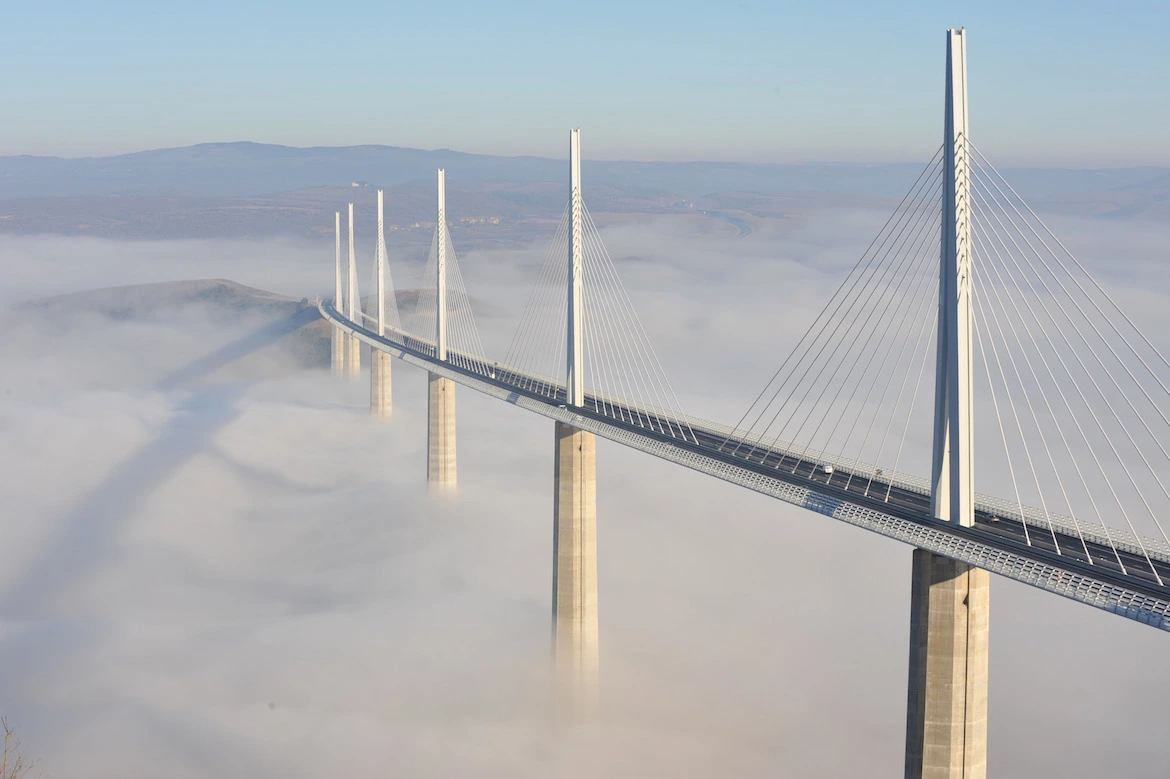
11
Hearst Headquarters, New York, 2006 (8); 30 St Mary Axe, London, 1999 (9); Carré d' Art, Nimes, France, 1984 (10); Millau Viaduct, France, 2004 (11). Photos © Chuck Choi (8), Nigel Young/Foster + Partners (9), Foster + Partners (10), Daniel Jamme/Eiffage (11).
The spaces that follow are dedicated to Foster + Partners’ many greatest hits—over 80 projects are included in the show, with clear, concise presentations that are staged with trademark panache (as well as with QR codes that take you to Bloomberg Connects). The skyscraper section, for example, lines up large-scale models against the Pompidou’s windows so that they dialogue with the Paris skyline; 3D-backlit sections render limpid and legible the opaque and the complex; in addition to a giant model with exciting cutaways, London’s 2017 Bloomberg HQ is represented by an impressive chunk of high-tech dropped ceiling that scintillates seductively overhead; likewise, suspended over drawings of Berlin’s Reichstag (1999), a substantial reproduction of the dome dangles winsomely like a crinolined glitter ball. The approach is summed up in a graphic handwritten note-to-self displayed in the very first room:
Remember
K I S S
keep it simple stupid
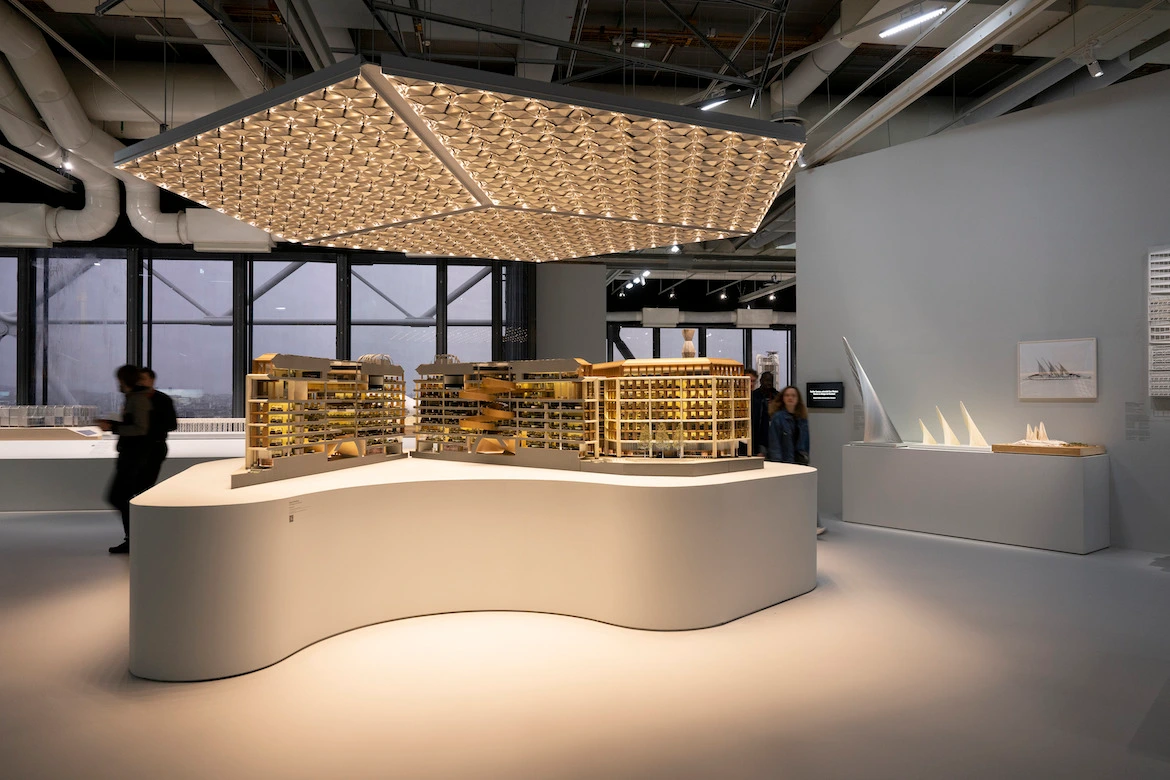
Model of Bloomberg Headquarters. Photo © Nigel Young/Foster + Partners
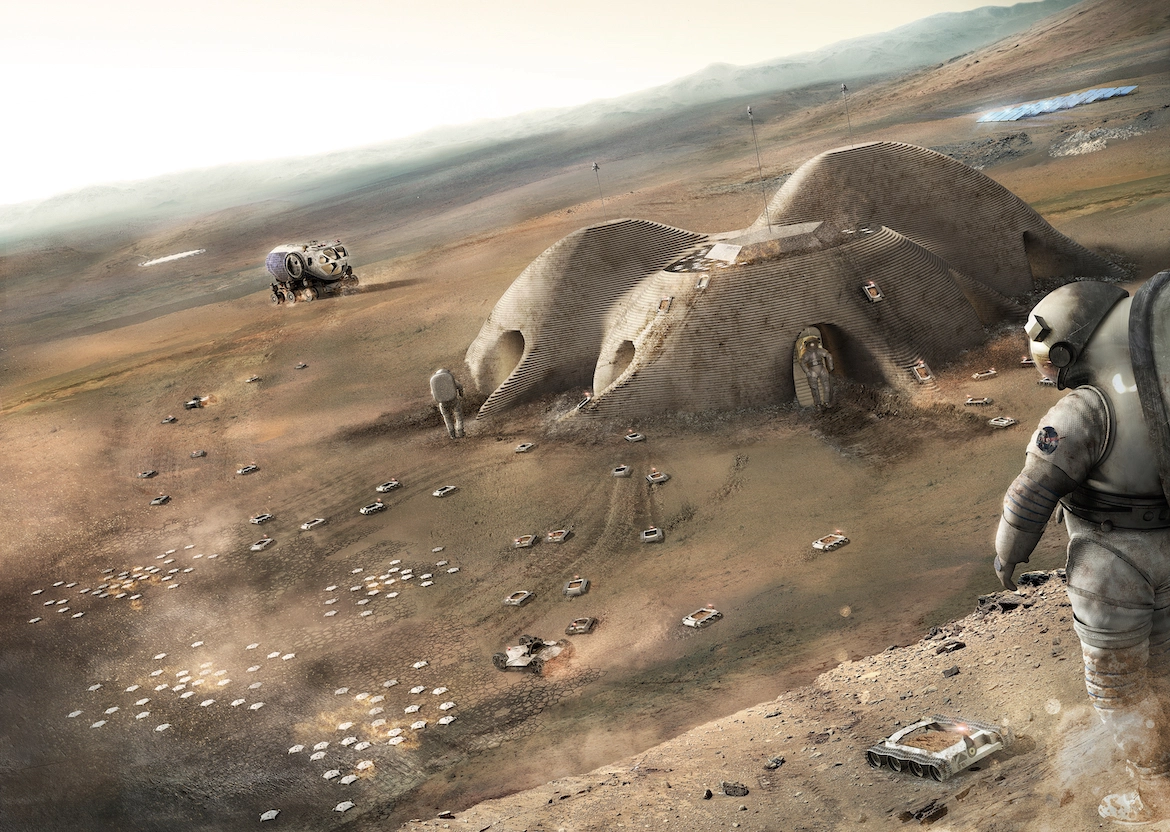
Norman Foster and Buckminster Fuller. Image © Foster + Partners

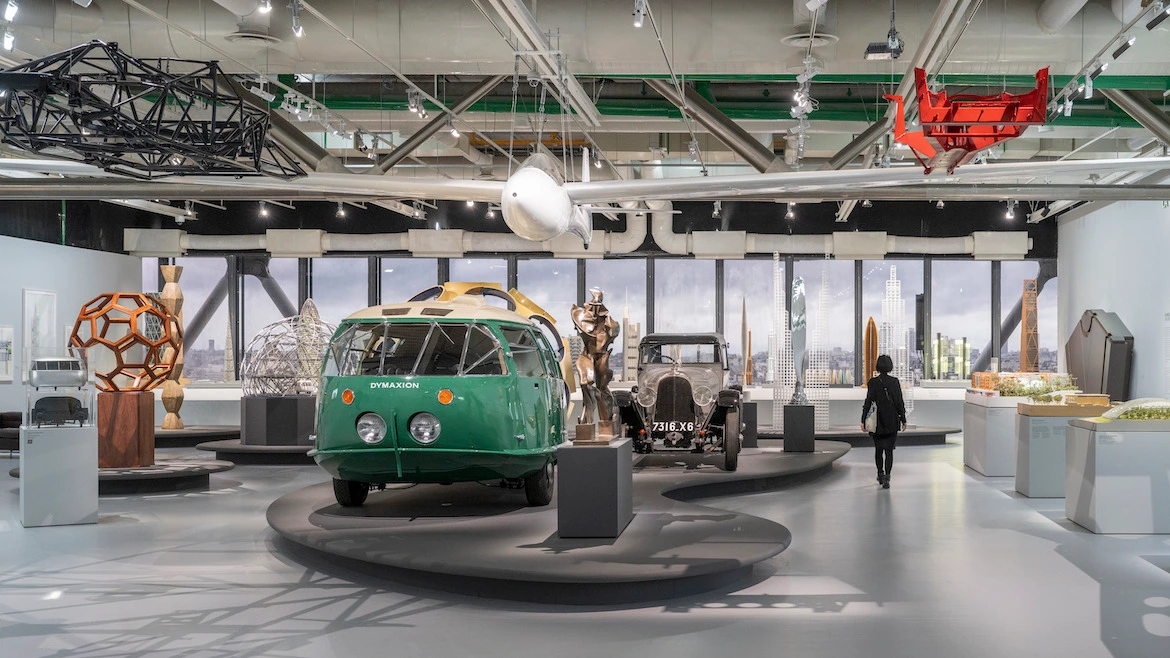
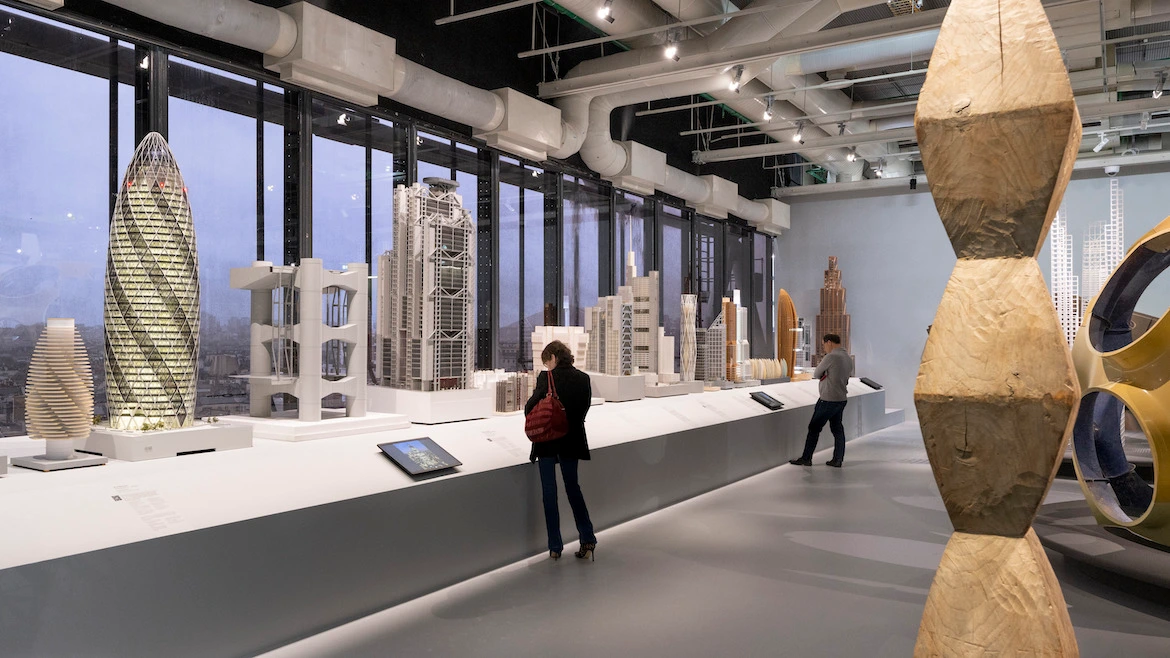
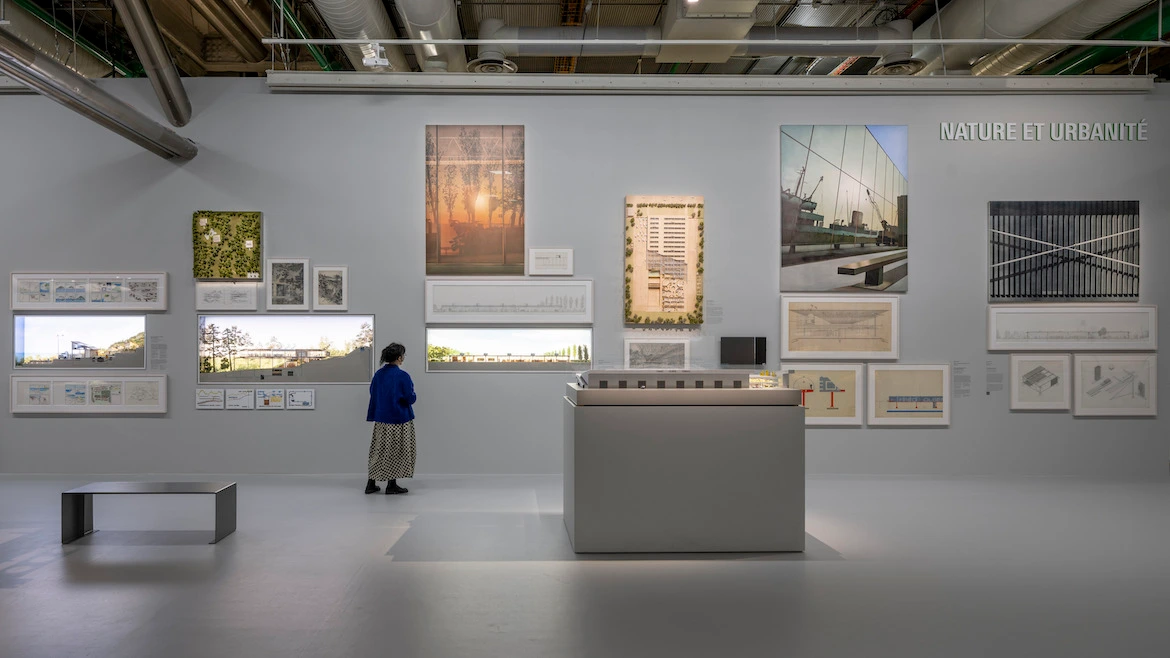


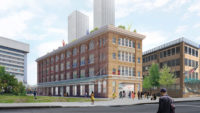
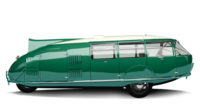
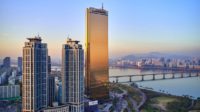
Post a comment to this article
Report Abusive Comment